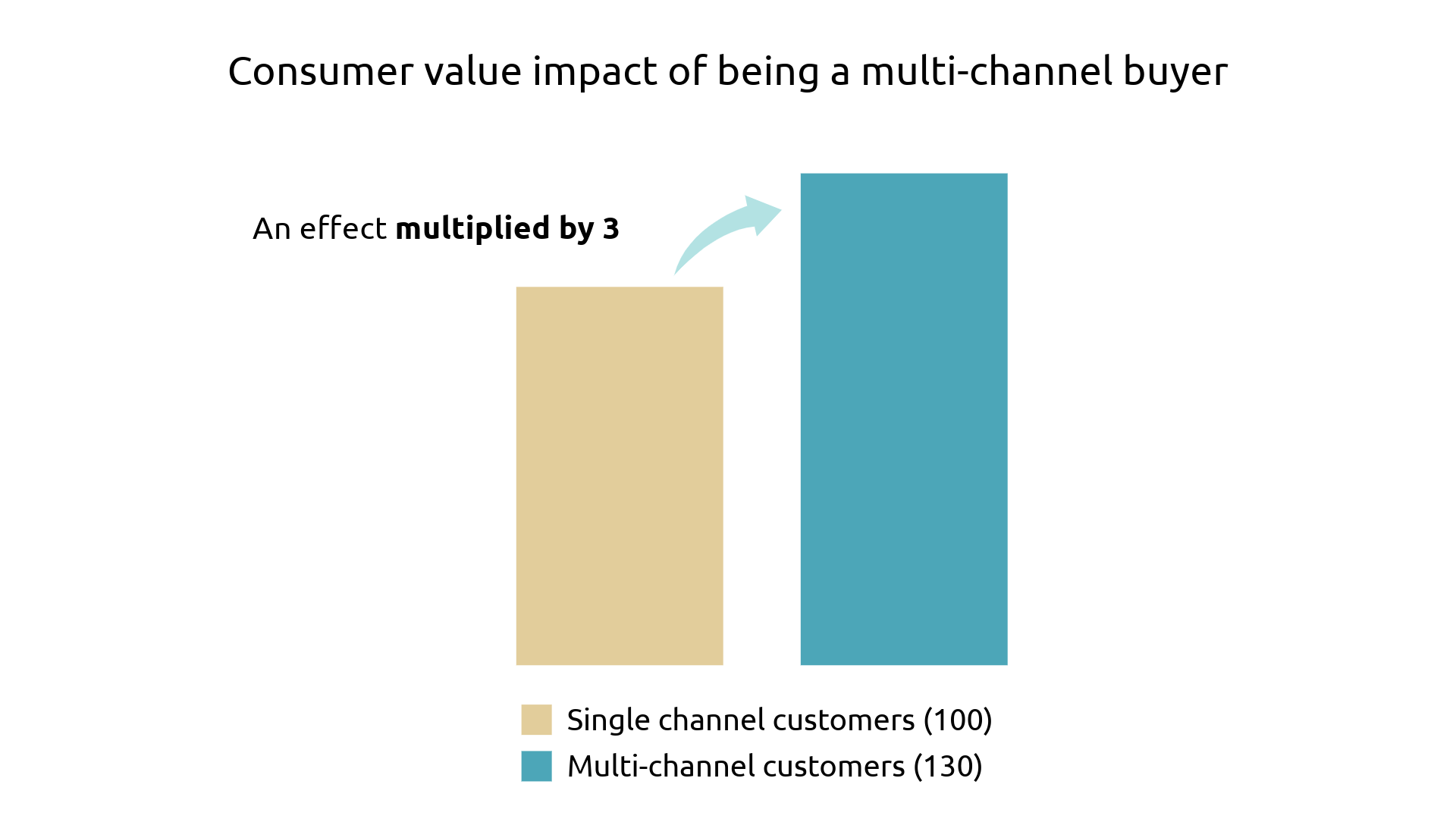Multi-channel¹ customers represent 3 to 11% of customers and 6 to 24% of the revenue in the apparel and cosmetic sectors. This proportion saw a significant increase before the COVID-19 pandemic. Although the figures have slightly decreased since then, these customers still present a significantly higher customer value compared to the average customer.
¹Multi-channel: at least one online and one offline purchase during the period.
/!\ Single-channel status is calculated only for the analysis period (i.e., if someone makes an online purchase in 2020 and an offline purchase in 2021, they are considered single-channel online in 2020 and single-channel offline in 2021, not multi-channel).


